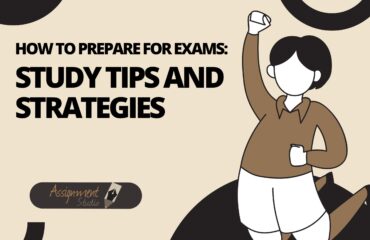
Scholarly writing is a little different from creative writing or the kind of assignments given to students in school. University and college research papers demand a certain kind of writing style that you must understand to succeed in their academics. This guide will give you a thorough review of the formats to be followed to express arguments properly when you are writing for a US based university.
Table of Contents
Understanding US Academic Writing Standards
The technical presentation of your ideas is just as important as the content of your research paper. If your paper is technically sound, it will make it easier for other academics and professors to compare it with others and even consider it for publication. Do not ignore this part of your academic writing as you need to know these things for effective communication. For proper quoting, citing and referencing, the following formats are followed in the US:
- APA (American Psychological Association) style
- MLA (The Modern Language Association) style
- CMS (Chicago Manual of Style) style
- Harvard referencing style for citation purposes
The most commonly followed one is the APA style and you will use it for most of your research papers in college. However, it is also important to know the other kinds of writing styles as one small difference can actually affect your grade.
Choosing a Topic
Choosing a topic can be very overwhelming for students because they want to express their opinions about something they care about, yet it has to be relevant and get them a good score. When you are making a list of topics and visiting the library for brainstorming, you need to keep the following points in mind:
- The chosen topic will demand a lot of time and patience so it has to be something that you feel excited about. If it a topic that is not necessarily interesting, you won’t be able to explore useful insights about it or go deeper into the subject
- You have to keep the length of your paper in mind (for APA, Intro and Thesis take up 20% of the word count, the body takes 70% and conclusion 10%) when you are choosing the topic. If you choose a broad topic like the history of Asia, you will end up summarising the topic instead of giving an analysis or discussion
- Choose something that has sufficient relevant literature for you to read through and form opinions
Developing a Thesis Statement
The next step after choosing the topic is to create a thesis statement– it should be concise, specific and arguable. A thesis statement basically answers a question that your topic poses. For example, this is just an obvious statement
‘Through a series of surveys, I found that most students in XYZ school are ill-equipped to sustain friendships due to unhealthy parenting style. I will further argue that this can be addressed by proper counselling and including certain laws in social policy for protection of children in abusive households’
Notice how the words ‘ill-equipped’ and ‘argue’ show that the student has thought clearly about the topic. Furthermore, ‘surveys’ and ‘social policy’ prepares readers about what will come in the rest of the paper. The topic is specific and can be argued by other scholars too.
In APA format, the first sentence of the abstract contains the thesis statement. Other formats will have different positions for placing the thesis statement (MLA puts it at the end of the Introduction paragraph). Your thesis statement might need a revision if it is not proven by the end of your research.
Outline and Structure
An outline is like a roadmap of your research paper. It provides the reader an organisational structure that contains the introduction, body and conclusion. Besides following the basic guidelines of the APA format like the font, font size and text spacing, there are also formatting instructions for headings and subheadings:
- Main headings: Use Roman numerals (I, II, III, IV) (do review your professor’s requirements as they might want decimal format)
- Subheadings: Use capital letters (A, B, C, D)
- Further subheadings: Start with Arabic numerals (1, 2, 3), then lower case letters (a, b, c), then Arabic numerals inside parentheses [(1), (2), (3)]
Remember to always start the outline on a new page
Writing the Introduction
The introduction brings into focus what your paper is trying to prove or disprove. When writing in the APA format, be careful to use the past tense when showing the evaluation of the empirical knowledge.The Introduction should not have the heading, instead the title of the paper should be at the top of the page (and not in bold). State in your own words how the ideas lead to your hypothesis. Remember to follow the referencing style when quoting something.
Conducting a Literature Review
The literature review includes scholarly journals (a.k.a. “peer-reviewed” & “academic”), professional journals, academic books & e-books, research reports, conference proceedings and doctoral dissertations. Start by referencing some older literature and then include as many recent studies as you can. The literature review supports your thesis statement and starts right after the Introduction. It is a separate section so it has its own introduction conclusion paragraph (summarising all the information).
For the APA format, within the text, the author-date style is used for citation and the complete details of the source are mentioned in the list of references at the end of the paper.
Methodology
See how the formatting style you are following labels the Methods section. For APA, it is labelled, centred and bold. For example, if you’re following a quantitative research method, you will state precisely the sample, measures, and procedures used. You will use the following headings and describe them one by one
Participants: Sample size and how you sampled. Also, it includes the demographic characteristics
Materials: The primary and secondary measures used and their quality
Procedure: Data collection, processing and analysis strategy
Use the past tense when writing this section
Results and Analysis
In the past tense, report the participant flow, missing data, descriptive statistics of participants, inferential statistics and results of the exploratory analysis. If the statistics numbers are more than 4, use a table, otherwise use a figure. You must include the test statistic value, the confidence intervals and exact p value, degrees of freedom and magnitude and direction of effect.
Discussion and Interpretation
The discussion is an interpretation of the results and gives the readers the reasons why the results came out the way they did. Then you have to clearly tell the implications of the results and how they lack in certain ways. You can look up the right scholarly phrases to use for APA style discussion here.
Conclusion
Discussion and conclusion are different in the way that the conclusion is shorter and gives a generalised answer of the central question while also giving recommendations for future research based on the findings but remember not to include new arguments.
Formatting and Citations
There are certain formatting settings that you need to follow for the different styles. For example, for MLA and APA, they are:
APA
- Standard font like 12 pt Times New Roman or 11 pt Arial
- 1 inch page margins
- Double line spacing
- Every new paragraph in indented by ½ inch
- Header is on the left top corner on each page if submitting for publication
- For Title page, everything is in the centre in this sequence: author name, affiliation, course, instructor and due date
- Page numbers on top right corner
MLA
- The pages have 1-inch margins.
- Text with 12-point font, usually Times New Roman
- Paragraphs separation is half an inch
- Header is slightly different from the rest of the paper
- For Title page, The name of the student is placed in the upper left corner followed by the instructor/professor’s name, and then the name of the specific course and the date is mentioned
- The title is on top and centred. A separate title page is not required
- Page numbers on top, in the upper right hand side.
- Outline is optional
Citations in APA
For in-text citation, author-date style is used and linked to the Reference page at the end. Reference page has the following format:
- Label is in the centre and in bold
- Lines are double spaced
- Alphabetically listed citations
Avoiding Plagiarism
The purpose of having this system of citation and referencing is to give proper credit to the original works of researchers and avoid plagiarism among academics.
If students follow these practices, good time management and the academic responsibility to learn things on their own, they can avoid plagiarism. Learning good paraphrasing is also important and when something is paraphrased, it should be cited. In the US, strict guidelines are followed for paraphrasing instructions. Plagiarising someone else’s work is an academic offence and implies heavy fines and expulsion.
Finalising and Submitting the Paper
Read through the work several times to see if everything is complete and there are no layout errors. You can hire a copyeditor for this and for proofreading purposes as well. Make sure the bibliography and citations are correct. Remember to add a table of contents. When you have checked everything off the list, add your signature if it’s required and submit it in the written and the right digital format.









